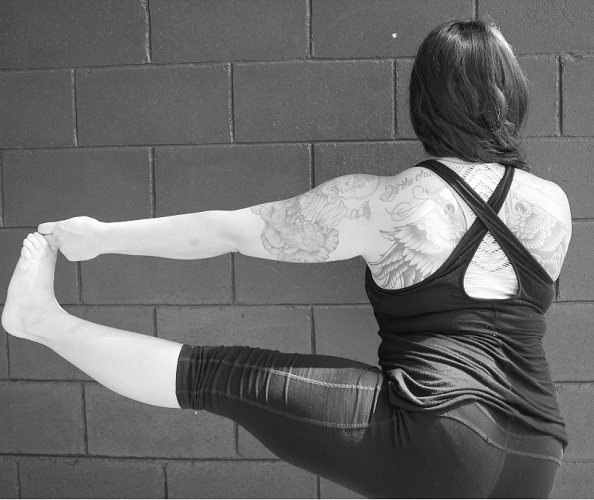A “Yoga Body” is a mixture of tissue and bones connected to a beating heart, a deep breath, a focused mind—and a steady spirit.
The yamas and niyamas are the first two steps upon the eight-limb path that is yoga, written by Patanjali many moons ago. They offer a simple yet profound way of looking at our bodies as more than a collection of exterior physical features.
For many of us, our yoga practice began by wanting to achieve a healthier relationship with our body.
The practice may have led us to a deeper understanding of our mind, emotions and our consciousness. Understanding these aspects is important, but don’t overlook the value of treating the body with the love and respect it deserves.
Our bodies are the essential vehicle for all of these practices.
The phrase “yoga body” may conjure up images of a skinny body shoved into tiny shorts and effortlessly balancing in a handstand. Or maybe it evokes an image of any body type that is both strong and flexible. There is nothing wrong with being skinny, wearing tiny shorts, doing handstands, being strong or being flexible.
There is, however, a limitation in seeing only the outside and what a body can achieve physically.
A body can also receive, moving in unison with mind and spirit.
So, I offer this meditation as an alternative to any preconceived cultural notions of what a yoga body is supposed to be.
A Yoga Body is one part of a complete person—not only a collection of bones, but a body of heart, mind and spirit too.
The Yamas.
Ahimsa (non-harming) is a Yoga Body (a mindset) that replaces harmful thoughts with helpful words—one that embraces tears when they come and allows joy and ecstasy to pulse through, uninhibited.
Satya (truth) is a Yoga Body that is aligned with reality. It acknowledges pain and welcomes a challenge. It knows when to be still and when to move. It acts with truth—but when it does not, it forgives, accepts and moves on.
Asteya (non-stealing) is a Yoga Body that receives all of the given gifts of sunshine, fresh air, intimate touches, friendly embraces, beautiful music. It recognizes the beauty in all things, accepts what is freely given and does not take.
Brahmacharya (self-direction) is a Yoga Body that honors all aspects of life through honest, deliberate actions. It directs passionate energy toward meaningful work and being of service to others.
Aparigraha (non-grasping) is a Yoga Body that accepts what is and loves. It embraces the present moment and does not bury itself in greed beyond necessity.
The Niyamas.
Saucha (purity) is a Yoga Body that consistently cleanses and purifies all the senses through discernment of what is consumed.
Santosha (contentment) is an accepting Yoga Body that is content with life and all that is contained within. It lacks nothing and exudes perfection of the highest intelligence.
Tapas (cleansing through fire) is a disciplined Yoga Body trained to withstand hardship, heartache and loss. It can die each night and begin again in the morning, taking on a bright new day with hope and courage.
Svadhyaya (self-study) is a curiously attentive Yoga Body, always listening for new cues. It wonders why and moves without judgment. It listens to the language of pain and adjusts itself accordingly.
Ishvaraparanidana (surrender) is a Yoga Body that surrenders to rest and restoration when needed. It recognizes that it is everything and nothing at the same time.
The next time the temptation arises to compare yourself to the body on the mat next to you or in the Instagram photo, come back to this meditation, replacing “Yoga Body” with “I.”
Make the meditation into an affirmation and a prayer, honoring the body as a beautiful part of the complete person.
~
Relephant Read:
Using the Yamas & Niyamas Toward Real Peace.
~
Author: Erin Roca
Assistant Editor: Cecilia Vinkel/Editor: Toby Israel
Image: Jessica Cuadra, courtesy of Author
~
 Share on bsky
Share on bsky


Read 1 comment and reply